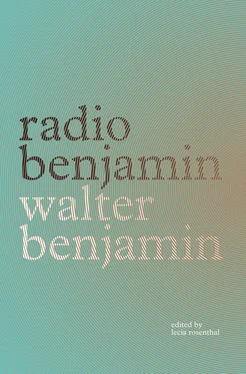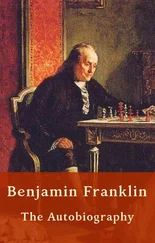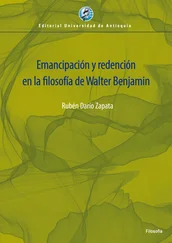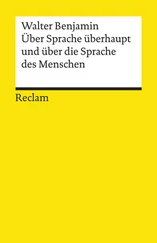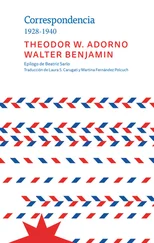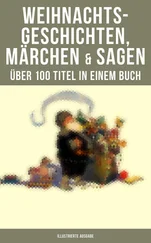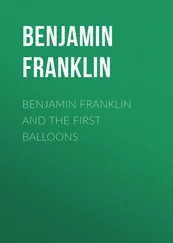“I had paused a distance from the heart of this red and green glow. The people now packing the streets were hardly a colorless mass. It was the clearly defined, closely related population of the local neighborhood; because it was a petit-bourgeois community, there was no one from the upper classes present, let alone any foreigners. As I stood by the wall, I should surely have been conspicuous due to my clothing and general appearance. But strangely, no one paid me any heed. Did no one notice me, or did the man who was lost within this scorching and singing street, the man I more and more became, appear to them as one of their own? This thought filled me with pride; I was overcome with delight. I didn’t enter the church; content merely to enjoy the profane part of the festivities, I was heading back with the first satiated participants, long before the overtired children would do the same, when I caught sight of some marble plaques, the kind with which the poor towns of this region put the rest of the world’s street signs to shame. They were drenched in torchlight, appearing to be on fire themselves. However, crisp and glowing letters emanated from their centers, newly forming the name, which, mutating from stone into flowers, from flowers into fire, grabbed at me with increasing, all-consuming intensity. Firmly determined to get home, I set forth and was happy to find a little alley that promised to shorten my route considerably. Signs of life had already subsided. The main street, where my hotel was located and which was still so lively just a short while before, seemed not only quieter, but narrower as well. While I was still musing on the laws that dictate such couplings of phonetic and optical images, a distant and powerful music struck my ears. Upon hearing the first notes, suddenly I was struck: here it comes! That is why so few people, so few of the bourgeoisie, were in the street. This is the great evening concert of V…, for which the local residents gather every Saturday. All at once, a new expanded city, indeed a richer and more animated city history, stood before my eyes. I quickened my pace, turned a corner and stopped, paralyzed with astonishment. Once again I stood in that street that had snatched me up as if with a lasso. It was already pitch dark, and the music band was offering its last forgotten melody to this tardy and solitary listener.”
Here my friend broke off. His story seemed suddenly to desert him. His lips alone, which had just now spoken, offered a long smile in farewell. I looked reflectively upon the signs blurred in the dust at our feet. And the imperishable verse marched through the arch of this story as if through a gate.
“Dem Staub, dem beweglichen, eingezeichnet, Novelle,” GS, 4.2, 780–7. Translated by Jonathan Lutes.
Broadcast on Southwest German Radio, Frankfurt, December 16, 1929. The broadcast was announced in the Südwestdeutsche Rundfunk-Zeitung for December 16, 1929, from 6:35–7:00 pm.
1Benjamin borrows the title from Goethe’s poem, “Nicht mehr auf Seidenblatt” [No longer on a leaf of silk], a verse posthumously added to the West-östlicher Divan (West-Eastern Divan), “Book of Suleika.” Benjamin refers to this verse in “Goethe’s Elective Affinities,” where he calls it “perhaps the most powerful poem in the Divan ” (SW, 1, 329; GS, 1.1, 167).
CHAPTER 34. E. T. A. Hoffmann and Oskar Panizza
I would be delighted if the series “Parallels,” whose announcement you will have read and which I am hereby inaugurating, has aroused suspicion in a few of you. 1It is precisely because of this suspicion, I would like to suppose, that I have a chance of being understood in my attempt to keep this endeavor free of misinterpretation. You all know of the suspect eagerness with which an earlier contemplation of literature often concealed its bafflement at certain works, its inability to penetrate their structure and their meaning, how it hid behind research into so-called influences, into parallels between subject matter or form. Nothing of the sort will be dealt with here. Yet a pointless hunt for analogies would be even worse. To point out some affinities between the creations of various writers, from various epochs, may at most satisfy a pedantic anxiety to improve one’s mind, but it leads nowhere and would not be sufficiently accredited — even if in such instances now and then a younger, misjudged writer is rehabilitated by the name of a great and intellectually compatible predecessor. We do not wish to deny that such a rehabilitation of Oskar Panizza, as unknown as he is discredited, is a secondary aim of these observations. But here, at the beginning not only of these observations but of an entire series, we shall deal primarily with identifying its main intention, and to this end we must allow ourselves a little digression.
One likes to speak of the eternity of works of art; one strives to grant the greatest among them endurance and authority for centuries, without realizing how one thus runs the risk of letting them ossify into museum-like copies of themselves. Because, to say it in a word, the so-called eternity of works of art is by no means identical to their vital endurance. And what reason there truthfully is for this endurance is most prominently to be seen in their confrontation with similar creations from our own epoch. Then it becomes clear that only certain unformed tendencies or vague dispositions can be called eternal, and that the work that has a fully-formed, vital endurance, is instead the product of that tenacious, sly force with which not only the eternal moments assert themselves into the current moments, but the current ones assert themselves in the eternal. Yes, the work of art is much less the product than the setting of such a movement. And while its so-called eternity is at best a rigid, exterior continuation, its endurance is a vital, interior process. That is why, as we look at these parallels, we are dealing not with analogies, nor dependencies of individual works on one another, nor studies of the writers, but rather with the primal tendencies of literature itself, and how they assert themselves from epoch to epoch in an inwardly transformed sense.
The fantastic tale, which we want to discuss today, is one of those primal tendencies. It is as old as the epic itself. It would be a mistake to think that the magical tales, the fables, the transformations, and ghostly deeds contained in humanity’s oldest stories are nothing more than traces left by the oldest religious ideas. Certainly the Odyssey and the Iliad and the 1001 Nights are material that was merely told; but it is equally true to say that the material of this Iliad, this Odyssey, this 1001 Nights was only woven together in the telling. The tale took no more from humanity’s oldest legends than it gave back. To tell a story using other words — with the fabulation and playfulness, the fantastical, all unfettered by responsibility — is, however, never merely invention but a transmitted, modifiable conservation within the medium of fantasy. This medium of fantasy is certainly of a very different concentration during, on the one hand, the first bloom of Homeric or of Oriental epic and, on the other, during the latest flowering of European Romanticism. But true storytelling always retained its conservative character, in the best sense of the word, and we cannot imagine any of the great storytellers as detached from humanity’s oldest body of thought.
The reason for the seemingly arbitrary permeation of eternal and current moments in a story emerges perhaps all the more sharply the more fantastic it is. This is palpable in Hoffmann as well as in Panizza. Palpable, too, is the tension between the two writers, stretched over the arc between the beginning and the end of the Romantic intellectual movement in Germany during the past century. The inexpressibly convoluted fates in which E. T. A. Hoffmann mires his characters — Kreisler in Tomcat Murr, Anselmus from The Golden Pot, Princess Brambilla, much maligned in Germany, much loved in France, and finally Master Flea 2—these fates are not only directed or influenced by supernatural powers, they have been created primarily in order to preserve the figures, arabesques, and ornaments in which the old spirits and natural demons seek to cast their endeavors in the bright daylight of the new century as inconspicuously as possible. Hoffmann believed in effective connections to the most distant, primal times, and as his favorite characters’ figures of fate are basically musical, he particularly established this connection through the aural: the fine singing of the little snakes who appear to Anselmus, the heartbreaking songs of Antonie the daughter of Krespel, the legendary tones he thought he heard on the Courland Spit, the devil’s voice on Ceylon, and the like. Music was to him the canon through which the spirit world manifested itself in daily life. At least insofar as we are dealing with the manifestations of benevolent spirits.
Читать дальше
